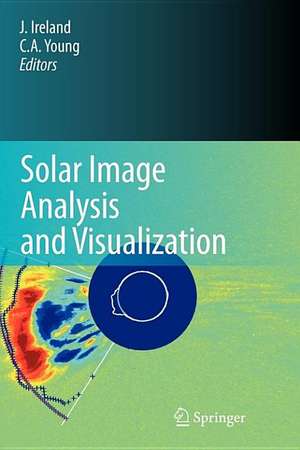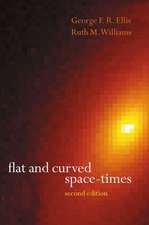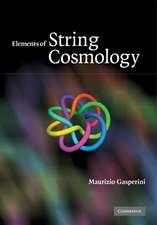Solar Image Analysis and Visualization
Editat de Jack Ireland, C. Alex Youngen Limba Engleză Paperback – 6 dec 2010
| Toate formatele și edițiile | Preț | Express |
|---|---|---|
| Paperback (1) | 560.55 lei 38-45 zile | |
| Springer – 6 dec 2010 | 560.55 lei 38-45 zile | |
| Hardback (1) | 648.24 lei 6-8 săpt. | |
| Springer – 29 mai 2009 | 648.24 lei 6-8 săpt. |
Preț: 560.55 lei
Preț vechi: 700.70 lei
-20% Nou
Puncte Express: 841
Preț estimativ în valută:
107.26€ • 114.70$ • 89.43£
107.26€ • 114.70$ • 89.43£
Carte tipărită la comandă
Livrare economică 14-21 aprilie
Preluare comenzi: 021 569.72.76
Specificații
ISBN-13: 9781441931085
ISBN-10: 1441931082
Pagini: 296
Ilustrații: IV, 289 p.
Dimensiuni: 155 x 235 x 16 mm
Greutate: 0.42 kg
Ediția:Softcover reprint of hardcover 1st ed. 2009
Editura: Springer
Colecția Springer
Locul publicării:New York, NY, United States
ISBN-10: 1441931082
Pagini: 296
Ilustrații: IV, 289 p.
Dimensiuni: 155 x 235 x 16 mm
Greutate: 0.42 kg
Ediția:Softcover reprint of hardcover 1st ed. 2009
Editura: Springer
Colecția Springer
Locul publicării:New York, NY, United States
Public țintă
ResearchCuprins
Preface: A Topical Issue on Solar Image Analysis and Visualization.- FESTIVAL: A Multiscale Visualization Tool for Solar Imaging Data.- Visualization of Distributed Solar Data and Metadata with the Solar Weather Browser.- Widespread Occurrence of Trenching Patterns in the Granulation Field: Evidence for Roll Convection?.- Principal Components and Independent Component Analysis of Solar and Space Data.- Automatic Recognition and Characterisation of Supergranular Cells from Photospheric Velocity Fields.- Automated McIntosh-Based Classification of Sunspot Groups Using MDI Images.- Multifractal Properties of Evolving Active Regions.- Multiscale Analysis of Active Region Evolution.- A Comparison of Feature Classification Methods for Modeling Solar Irradiance Variation.- The Observed Long- and Short-Term Phase Relation between the Toroidal and Poloidal Magnetic Fields in Cycle 23.- Comparison of Five Numerical Codes for Automated Tracing of Coronal Loops.- Segmentation of Loops from Coronal EUV Images.- The Pixelised Wavelet Filtering Method to Study Waves and Oscillations in Time Sequences of Solar Atmospheric Images.- A Time-Evolving 3D Method Dedicated o the Reconstruction of Solar Plumes and Results Using Extreme Ultraviolet Data.- Automatic Detection and Classification of Coronal Holes and Filaments Based on EUV and Magnetogram Observations of the Solar Disk.- Spatial and Temporal Noise in Solar EUV Observations.- Multiscale Edge Detection in the Corona.- Automated Prediction of CMEs Using Machine Learning of CME?–?Flare Associations.- Automatic Detection and Tracking of Coronal Mass Ejections in Coronagraph Time Series.
Textul de pe ultima copertă
This volume presents a selection of papers on the state of the art of image enhancement, automated feature detection, machine learning, and visualization tools in support of solar physics that focus on the challenges presented by new ground-based and space-based instrumentation. The articles and topics were inspired by the Third Solar Image Processing Workshop, held at Trinity College Dublin, Ireland but contributions from other experts have been included as well.
This book is mainly aimed at researchers and graduate students working on image processing and compter vision in astronomy and solar physics.
This book is mainly aimed at researchers and graduate students working on image processing and compter vision in astronomy and solar physics.
Caracteristici
Only book that focuses on the intersection between the fields of solar physics and image processing Discusses state-of-the-art techniques
















